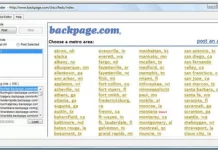Google’s algorithms are a complex system that decides how websites, content, and results appear for a specific query. The search engine has regularly tweaked its algorithms many times in the past few years. Some changes went unnoticed, while some have had major impacts on website owners and SEO service providers. The sites with weak on-page and off-page SEO have been affected the most.

Chronology of some major Google Algorithm updates:
- 2011: The search engine launched Google Panda update in February to eliminate websites with plagiarized or duplicate content.
- 2012: Google rolled out Google Penguin update in April to sift through websites that had backlinks to irrelevant and spam sites. In October, it unveiled Google Pirate update to look for websites with heavy copyright infringements.
- 2013: The technology behemoth introduced Google Hummingbird in September to eliminate irrelevant content.
- 2014: The Google Pigeon update, introduced in July, ranks search results as per users’ address and location.
- 2015: Rolled out in April, Google Mobilegeddon update favored mobile-friendly sites.
- 2016: Unveiled in September, Google Possum update improved local search results.
- 2017: In March, Google Fred update announced to eliminate websites that provide high-quality content or adequate information.
- 2018: The Google Medic update, debuted in August, focuses on information quality in health and wellness sites.
- 2021: The search engine launched the Google Page Experience update in June to give priority to web pages that provide high-quality user experiences such as fast load speed and stable pages.
How to deal with Google Algorithm changes
A major Google Algorithm change can have huge impacts on many websites. Here are nine ways to deal with them:
1. Go through Google’s Webmaster Guidelines
In the last 10 years, Google has introduced at least 10 major Algorithm updates and many more small changes. Research more on the previous updates and understand what requirements websites must have to rank at the top. Read the Webmaster Guidelines to understand the existing criteria for a good-quality website. Also, whenever the search engine launches a new update, go through the updates to get the idea of the new requirement.
2. Create original and relevant content
After the Google Panda update, the search engine removes the websites that have plagiarized or duplicated content. Write content that is original and relevant to your target audience. Use a good plagiarism checking tool to ensure the content is not plagiarized. Don’t stuff keywords as it decreases the content quality. Make sure that the content is consistent with the headline. You can take the help of professional on-page SEO service providers to help you create original and engaging content.
3. Leverage E-A-T
E-A-T is short for expertise, authoritativeness, and trustworthiness. It assesses a web page’s general quality. Many reliable websites leverage the expertise of experts while creating content. Even though leveraging experts’ views are not a guaranteed ranking factor, it enhances the accuracy and reliability of the content. While creating content, take some experts’ help and provide their credentials.
4. Make sure your website is free from spam
Remove backlinks to spam websites. External links can make or break a website’s credibility and rankings. After the Google Penguin update rollout, search engine bots sifted websites that had backlinks to irrelevant and spam sites. If any of your web pages has backlinks to spam websites, the algorithms will remove the content. A site that links to trustworthy sources enjoys good ranks.
5. Optimize your website for local searches
Since Google Pigeon started ranking search results as per the users’ address and location, it is crucial to use local SEO. This will enable you to appear on top of Google search results as well as Google Maps. Consider using off-page SEO tactics to boost the webpage’s authority for better rankings. Leverage social media platforms to engage with the target audience and get positive reviews. Get good press coverage and publicity to enhance your local reputation. The more you focus on off-page SEO, the more you will optimize for local search.
6. Optimize your content for mobile devices
With the 2015 Mobilegeddon update, the websites optimized for mobile devices are favored over the websites that are not mobile-friendly. Select a high-quality, responsive web design to make the website more mobile-friendly. Make sure the content is properly formatted, and readers can easily access the website using their smartphones. Use structured data and compress your images to make them more accessible on mobile devices. Don’t use flash.
7. Give equal importance to content quality and quantity
Make sure you create SEO-optimized and high-quality content. The Fred update removes websites that provide high-quality content or adequate information. It should also offer enough information. When writing content, ensure it is unbiased, well-researched, and well-edited. Consider the services of professional SEO service providers to create high-quality content of optimal length.
8. Take extra care if you have a healthcare or YMYL website
As Google Medic update focus on the quality of the information in health and wellness sites, take extra care if you are a ‘your money or your life’ website. The web pages and content can negatively impact the lives and finances of your target audience if they are wrong. Make sure that the content is one hundred percent accurate and clear.
9. Increase site load speed
With the latest Google Page Experience, a website’s load time can decide its rank. Make sure that your website gets loaded within three seconds, which is considered the best speed for websites. Consider using some tools to enhance the speed. Compress the images and optimize videos, to improve the speed.
In closing,
Google has introduced at least 10 major algorithm updates in the last 10 years. In 2021 alone, it has updated its algorithms at least seven times. Apart from that, it makes minor algorithm updates many times a year. The updates, however, won’t affect websites that have good content. Creating original content, optimizing for mobile searches, building high-quality links, and doing local, on-page and off-page SEO will reduce the risks.

































